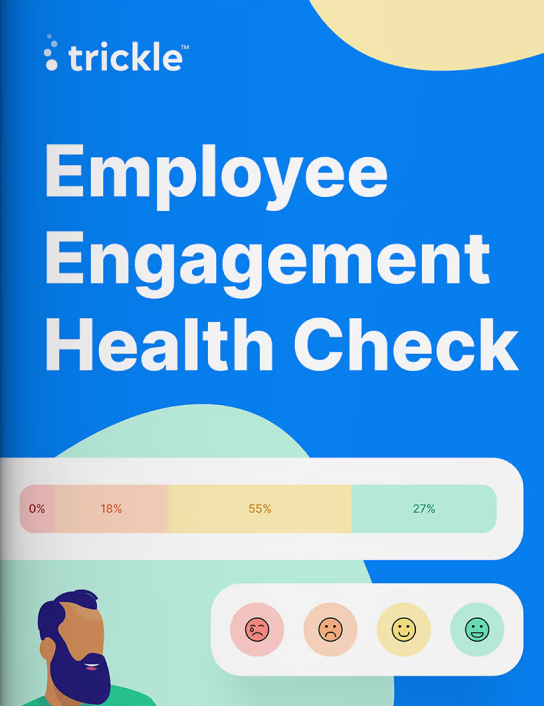How well does your company engage its employees?
Take your health check and find out.


A Gartner survey revealed that only 13% of employees are satisfied with their experience at work. This indicates that a large number of employers are either completely unaware of their employee experiences, or they are and aren’t doing enough to change it. I’m unsure which is worse.
Either way, it shows that there needs to be significant changes in the way that employers craft employee experiences.
Unsatisfied employees can soon become ex-employees. Lowering staff retention rates is something that no one wants.
So, how can we stop this from happening?
One way is to improve the type of insights employees can give and employers have access to. Read on to find out more.
As times change, so does the culture in the workplace. This is ultimately a good thing. Parts of our working culture needed to evolve to become more inclusive and fit for purpose. As a result, new ways of working have appeared to aid this process, such as flexible working.
Businesses strive to keep pace with competitors and regulations to remain relevant in their industry. If they don’t, they’ll fail. The same also goes for how they treat their employees. They have to update their practices with the same level, if not more vigour.
Employer branding is a part of an overall brand as just as important to how a business is perceived by its customers.
If there’s a disconnect between the customer brand and employer brand, it can have severe consequences for the business. Customers interact with employees. If it’s not an enjoyable experience to work somewhere, it soon won’t be an enjoyable experience to purchase anything from there too.
If there’s an issue and culture change is needed it’s not enough to just have a mandate from senior leadership. It has to have specific, relevant, consistent actions behind it. Without these actions, it’s just meaningless words on a page or a website. It will attract many potential employees but retain few once they realise the commitment to change company culture for the better simply isn’t there.
If a business is committed to continuous improvement, they can then look into how they can effectively innovate. This can often look simpler than they originally thought, particularly if they focus on people, not processes.
Whenever the words ‘innovation’ and ‘work’ are placed in the same sentence, even in the same proximity of a paragraph, there’s an assumption that the writer is referring to a type of system (usually digital). This system tends to have nothing to do with humans, even though it will likely be humans using the system.
The question that should be asked when implementing technology into a workplace is ‘How does this help the people who work here?’
Words like:
Take up a bit too much room in the discussion around innovation. If your employees feel happy, heard, and respected, they’ll likely be more effective, efficient and productive.
The focus should always be on people, not systems. Yes, we all need the support of digital mechanisms to run a successful business. But those systems have to be built, adopted, used and oftentimes managed by people.
Enabling employees to give feedback anonymously on a wide variety of workplace topics in real-time is an innovation. Empowering employees to manage themselves with the help of a digital platform is an innovation. Virtual fistbumps are an innovation.
It may not sound cutting-edge, but it sure does a great job of improving how people work, and after all, isn’t that what we want most?
These types of innovations can provide a digital place for employees to collaborate, discuss issues and share important information.
Employers can have access to this information, but in a way that doesn’t compromise their employees. For example, if an employee has an issue with one of the senior leadership team they can raise that with the peace of mind that their name won’t be mentioned. The focus can then be on the issue at hand, not who raised it.
Information can be powerful when acted upon appropriately. Employee engagement platforms such as ours give both employers and employees the power to share and act upon information effectively by communicating openly, and privately in real-time.
Trickle enables employers to innovate in a way that directly benefits their employees. It also means that employees are fully involved and at the forefront of driving culture change, instead of it just being an empty statement for external eyes.
Our employee engagement platform gives employees a place to discuss internal issues, congratulate each other for great work and share important information with ease.
Employers can use the insights from this to prioritise action points in day-to-day activities or use it as an anchor tool to drive real workplace culture change.
Happy employees usually mean higher retention rates. Happy employees usually mean happy customers. In a nutshell, our platform helps you keep your people happy at work.
Article written by Trickle CEO & Founder, Paul Reid.
Click below to book a demo and see how Trickle can help your organisation.